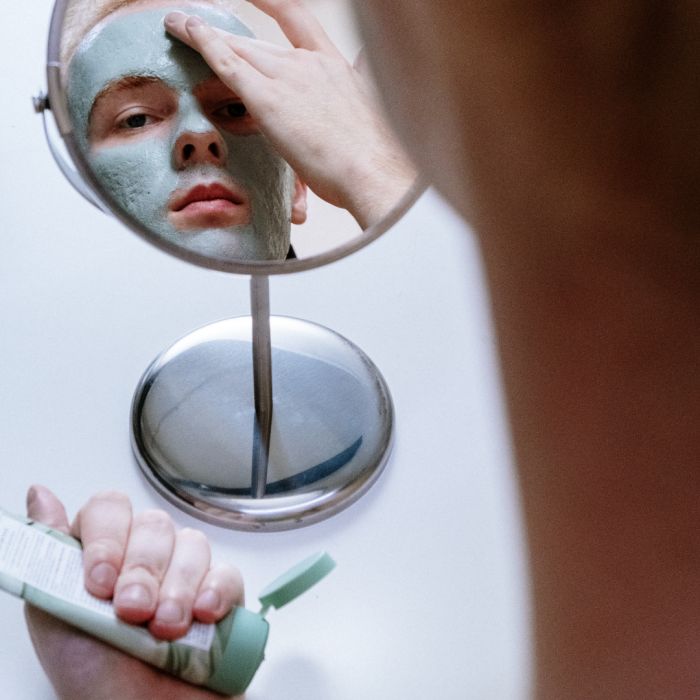Acne is the most common skin problem among teenagers. It occurs practically in most teenagers.
and, depending on various factors, including skin type, diet and hormonal factors, has different symptoms and severity.
Adolescent acne
is a natural phenomenon that occurs during puberty. Because during this period both girls and boys have increased androgen secretion in their bodies.
Dihydrotestosterone (DHT) – one of the forms of testosterone is the main culprit contributing to acne. Because it is located in the hair follicles and sebaceous glands. The open outlet at the hair follicle, the so-called expanded pores are one of the causes of sebum and bacteria accumulation in the closed hair follicle, which causes inflammation of the skin.
Where adolescent acne is most common
In young people there is a face (mainly T-zone, i.e., on the forehead, nose and chin). These places are particularly rich in sebaceous glands, chest and back. In young girls the first skin lesions can be seen just before their first menstruation. This is influenced by a decrease in progesterone and estrogen levels. Women may also notice acne exacerbation from 2 to 7 days before menstruation. Because there is an increase in hydration of the epithelium lining the hair follicle.
Acne occurs most frequently in young people and consists in the production of various lesions on the skin, including purulent cysts and papular-papular lesions. The main task of sebum is to protect against excessive moisture. As well as skin and hair dryness by lubricating their surface. However, its increased excretion leads to various diseases such as acne and seborrheic dandruff. This phenomenon is visible in the form of oily skin. The second cause is keratinization of the follicle mouths, which is manifested by excessive accumulation of keratin in hair follicles.
How to get rid of acne ?
Home acne skin treatments mainly involve properly cleansing the skin morning and evening to remove the stratum corneum and impurities. For this type of activities you need washing preparations in the form of micellar gel. Washing foams, micellar liquids and tonics for oily or mixed skin, containing substances that reduce inflammation (lactic, azelaic, salicylic, glycolic acid). They will help to clean the plugged sebaceous gland outlets.
Moisturizing the acne skin is an important aspect, given that most anti-acne preparations can dry out the skin intensely as a side effect. Sesderma’s AZELAC M cream is perfectly tolerated by acne skin. Because its composition contains a large amount of azelaic acid. Which has an antibacterial effect, soothes irritation and calms the skin.
At home, the patient can easily afford the application of herbal poultices and oral supplementation of infusions. Acne conditions are treated, among others: Chamomile, Marigold, Common Turnip, Greenland Marsh, Small-flowered Virgin Mary, Common St. John’s Wort or Violet Tricolour.
Adolescent acne – Cosmetic surgery treatment
It plays a significant role in the fight against juvenile acne. In the case of blackheaded acne, manual cleansing can be performed, which consists of manual cleansing of inflammation, blackheads, moustaches and piglets – this treatment is not recommended for people with sensitive and capillary skin. Due to the specificity of the treatment, it may cause swelling, redness and irritation, which may last up to 24 hours after the treatment.
Other treatments that perfectly deal with contaminated skin are microdermabrasion and cavitation peeling. These are mechanical treatments, which consist of controlled skin cleansing. Treatment procedures can be combined with exfoliation (peeling), giving a deeper penetration of active substances.
Exfoliation with acids
consists in the deep removal of old, dead epidermis. This treatment stimulates the deeper layers of the skin, supporting renewal and has a positive effect on the production of collagen and elastin. Depending on the problem, a cosmetologist selects the appropriate acid. Depending on the intensity and depth of exfoliation of the epidermis. In the case of juvenile acne, fruit acids such as glycolic, mandelic, salicylic and azelaic acid are most commonly used.
These peelings reduce excessive keratosis of the skin and seborrhea, have an anti-inflammatory, comedolite and brightening effect. They not only help to eliminate blackheads and inflammation, but also reduce acne changes such as: discoloration or scars.










